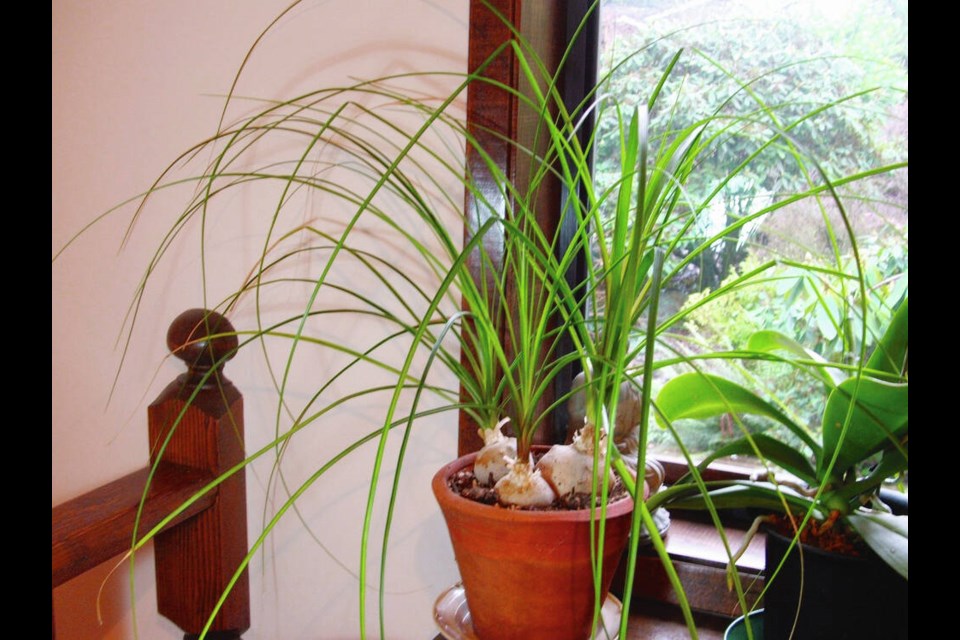Dear Helen: In a recent column you mentioned an “alternative” type of lawn blend with clover and other ground covers. What is the name of the mixture, and where can it be purchased?
L.C.
Mine is not a purchased blend, but a sort of accident, the result of growing experimental plantings over the years, some of which turned out to be dubious in their behaviour.
Heal-All (Self-Heal, Prunella vulgaris), which I found in a British seed catalogue, is a medicinal herb that forms a ground cover mat of runners that produce violet summer flowers. That one limited planting, years ago, lives on in the garden, having seeded itself about to become part of my oddly mixed “lawn.”
There are English daisies, clover, patches of baby’s tears from a clump a friend gave me years ago, hardy geranium and rose campion seedlings. Ground-hugging carpets of thyme in a front bed have migrated into the “lawn” blend.
For blends that offer alternatives to traditional lawns, check out the print or online catalogue from West Coast Seeds. Their two-page Lawn Solutions section includes an Alternative Lawn Mix the includes fine fescues, flowers and clover species. Bee Turf blends mixed clovers and low-growing wildflowers. Easy Care Envirolawn is a mix of slow-growing grasses and drought tolerant flowers.
The point of these blends is to grow an environmentally beneficial green turf that requires few resources (water, fertilizer) and minimal maintenance.
Dear Helen: My pony tail palm has grown too large, at almost two metres high. It is not attractive and I’m thinking of composting it. Your advice?
A.M.
A pony tail palm (Beaucarnea recurvata) can usually be kept acceptably neat by pulling away dried leaves at the lower end of the plant and snipping off dried leaf tips. I know someone who has one of these plants, as large as yours, on the floor of her condo. She’s pleased with hers, but I can see that the plant could become untidy.
If you are truly unhappy with your palm, a young replacement plant would be the simplest solution.
The leaves on a pony tail grow from a swollen bulb-like base (or bases). If your plant has any small offset swellings they can be separated from the clump and potted, preferably in spring. I’ve not tried this, and I’ve heard it does not always work well, but it’s an option.
However you acquire it, if you do desire a new, smaller version of your plant, grow it in a small clay pot to curtail its size. My pony tail is as close to care-free as any plant I’ve grown. For many years it has resided in a 12.5 cm (five-inch) wide clay pot, where it has remained at around 40 cm (16 inches) high. I give it just the occasional watering and a dash of fish fertilizer in spring and early summer.
Dear Helen: Are there certain garden clippings that should not be composted? Why should they be not used?
J.C.
It is wise to keep weeds that have formed seeds out of compost heaps, unless you “hot compost” at temperatures between 55 and 60 C, which will kill most weed seeds. An alternative is to place seed-bearing weeds in a plastic bag, close the bag and leave it in full, hot sun for two or three weeks before composting its contents.
Ancient Romans placed weeds in buckets or barrels of water, leaving them to rot for around a month before placing them and the nutrient-rich water in the compost. Some organic gardeners set pails of water in convenient places around the garden for placing weeds to rot and transform into liquid fertilizer for adding to compost heaps.
Rendering weed seeds unviable in these ways prevents their infesting plots where finished compost has been spread.
Woody materials that are unlikely to break down should be kept out of compost heaps. This includes prunings of hard wood. My kiwi vines need a fair amount of summer pruning, to lighten the shade cover over the developing fruit. The vines grow fast, and some long stems have become quite tough by now. As I chop them up for the compost, I stop at the tough stem ends and compost only the stem parts that can be cut through without a big struggle.
To avoid the spread of plant diseases, keep infected plant parts out of the compost.
>>> To comment on this article, write a letter to the editor: [email protected]



